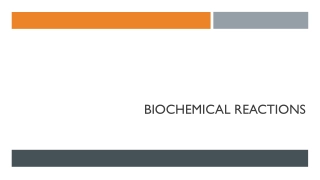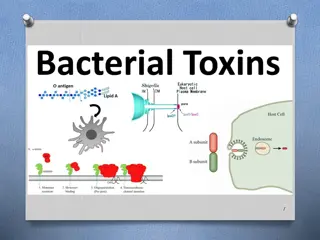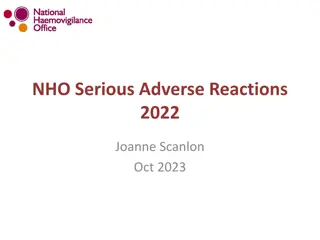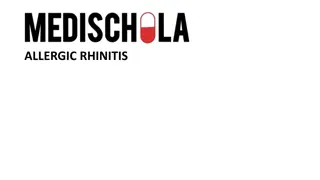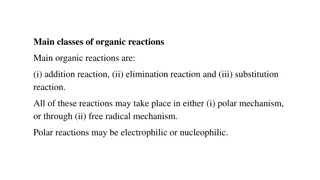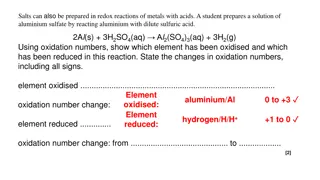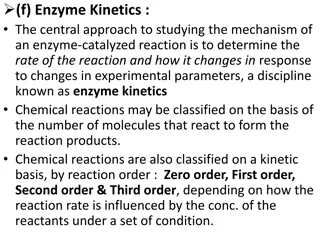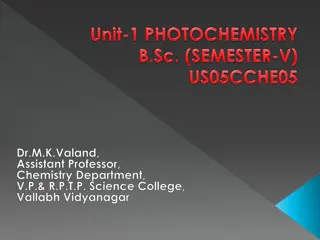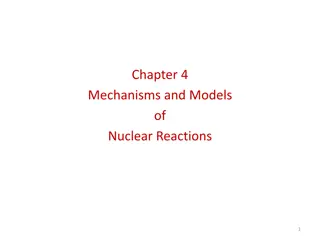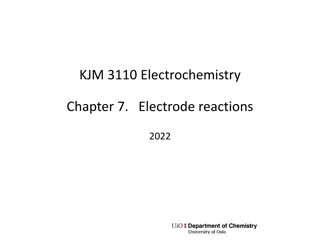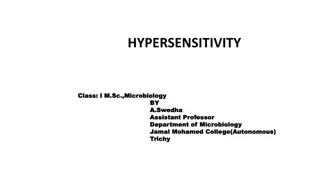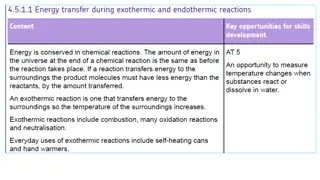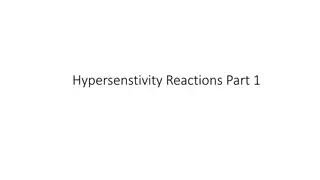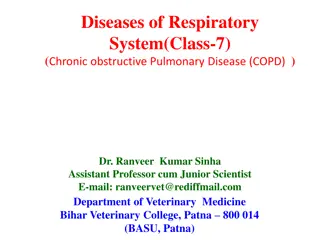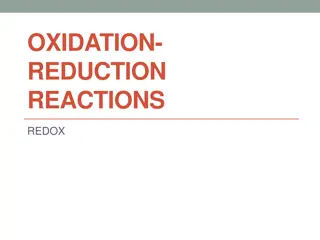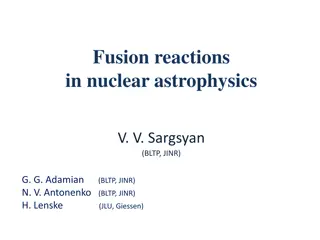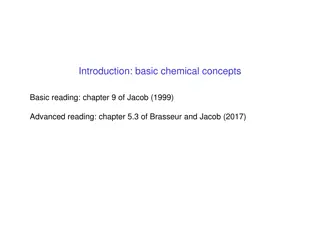Hypersensitivity Reactions
Hypersensitivity reactions involve the interaction between antigens and antibodies, leading to tissue damage. Learn about Type III immune complex-mediated hypersensitivity and its mechanisms. Discover the symptoms induced by these reactions.
Download Presentation

Please find below an Image/Link to download the presentation.
The content on the website is provided AS IS for your information and personal use only. It may not be sold, licensed, or shared on other websites without obtaining consent from the author.If you encounter any issues during the download, it is possible that the publisher has removed the file from their server.
You are allowed to download the files provided on this website for personal or commercial use, subject to the condition that they are used lawfully. All files are the property of their respective owners.
The content on the website is provided AS IS for your information and personal use only. It may not be sold, licensed, or shared on other websites without obtaining consent from the author.
E N D
Presentation Transcript
Hypersensitivity Reaction Dr Zahraa A Mohammed
Learning objectives After reading this lecture, you should be able to: Distinguish between the four types of hypersensitivities, and understand the immunological mechanisms behind each of them. For each of the four types of hypersensitivities, recognize the harmful effects of these immune responses when they become inappropriately vigorous responses (hypersensitivity reactions). Discuss the roles of environmental factors and genetics in predisposition to allergies
Type III Immune complex- mediated hypersensitivity Complexing of antigen plus antibody facilitates phagocytosis and clearing of antigen Large amounts of these complexes can lead to tissue damage & Type III hypersensitivity
Mechanism of Type III hypersensitivity Type III reaction involves the interaction between soluble antigen and high levels of circulating antibodies. The immune complexes formed, precipitate and become lodged in fine capillary networks such as those of kidney, liver, joints and lungs (where there is naturally high pressure in blood).As the complement system is activated, C3a and C5a are formed. These complement fragments, termed as anaphylatoxins stimulate the release of vasoactive amines from basophils and mast cells. These chemotactic factors attract neutrophils, eosinophils and basophils to the target site..
. Moreover, immune complexes can bind via Fc receptors to basophils, mast cells, and platelets causing the release of vasoactive amines. These vasoactive amines cause the retraction of endothelial cells of blood vessels, exposing the basement membrane. Hence the immune complexes are deposited on the basement membrane Since the immune complexes are deposited on the basement membrane of the blood vessels, the phagocytes are unable to engulf the complexes resulting in the release of lysosomal enzymes onto the site of deposition
. This process of attempted and unsuccessful effort of phagocytosing is sometimes called frustrated phagocytosis. The released lysosomal enzymes from the phagocytes as well as the granules released from mast cells cause tissue damage. Platelets aggregate on the exposed basement membrane of the blood vessels to form microthrombi which results in ischaemia
Symptoms induced such as fever, urticaria (rashes), joint pain, lymph node enlargement, and protein in the urine. The resulting lesion is referred to as vasculitis if it occurs in a blood vessel, glomerulonephritis if it occurs in the kidney, or arthritis if it occurs in the joints. Capillaries in the renal glomeruli and synovia are sites where plasma is ultrafiltered (to form urine and respectively) by passing through specialized membranes, and these locations are among the most common sites of immune deposition. inflammatory synovial fluid, basement complex
Antigens in immune complexes Auto-antigens(self antigens) can be involved, it can not be permanently eliminated; hence type III reaction can not be easily resolved. Autoantigens can only cause immune complex disease in the presence autoantibodies. DNA is an antigen in SLE Innocuous Environmental Antigens fungal spores, which cause the localized immune complex disease known as farmer s lung Infectious diseases Streptococcal and hepatitis infection
Type III can be localized oArthurs reaction Injection of antigen intradermally or subcutaneous into animal that has high level of antibody for that antigen leads to the formation of high level of immune complexes. complexes precipitate, often within the venule. Subsequently complement system immune complexes anaphylatoxins are generated which cause mast-cell degranulation These large the binds these and
Chemotactic factors generated at the site of antigen entry leads to the influx of neutrophils and platelet aggregation. Th e accumulation of complexes in the capillaries also causes release of histamine from mast cells. This causes oedema and hemorrhage. The reaction reaches a peak aft er three to eight hours and then slowly subsides within 48 hours. After 48 hours, the neutrophils are replaced by mononuclear cells and eventually by some plasma cells.
INTRAPULMONARY ARTHUS-TYPE REACTION Arthurs type reaction appears to be responsible for number of hypersensitivity disorders in humans induced by inhaled antigens. Inhalation of bacterial spores, antigens from dried faeces of pigeon (pigeon fancier disease), thermophilic actinomycetes from mouldy hay (farmer s lung) introduces antigen into the lungs. This usually results in formation of local immune complexes in the alveoli leading to inflammation and alveolitis associated with severe breathing difficulties
GENERALIZED TYPE III REACTIONS Sometimes a large amount of antigen enters the host body and in such case antigen is still in circulation when antibodies are formed. Since antigen is in excess, small (soluble) antigen antibody complexes are formed. These soluble immune complexes are not easily removed from the circulatory system as they are not easily phagocytosed. Deposition of these complexes at various sites in the body elicits various tissue-damaging type III reactions at the site of their deposition
Serum sickness is a complication of serum therapy in which a relatively large dose of foreign serum containing a particular antibody is given against diseases such as diphtheria or tetanus (for example, horse anti-diphtheria or horse antitetanus serum). Usually within a week of injection of serum, antibodies are formed against injected horse proteins particularly horse globulin and the individual begins manifesting a variety of symptoms Th e symptoms of serum sickness include fever, swollen lymph nodes, painful swollen joints and albuminuria, apart from general weakness. The antibodies formed against injected horse proteins enter the circulation and complex with antigen to form antigen antibody complex. Because the reaction occurs in antigen excess, immune complexes are small and very slowly
Serum sickness The precise manifestation of serum sickness depends on the amount of immune complexes formed and site of their deposition. Clinical recovery usually occurs within 20 30 days. However, if these complexes are deposited at the site of filtration they may lead to the development of number of diseases. Deposition on glomerular basement membrane causes glomerulo-nephritis; on basement membrane of blood vessels, vasculitis, on synovial joints, arthritis and at choroids plexus of brain, SLE.
Systemic glomerulonephritis is a well known immune complex disease. Its onset occurs several weeks after a group A - hemolytic streptococcal infection, particularly of the skin, and often occurs with infection due to nephritogenic types of streptococci. It is likely that streptococcal antigen antibody complexes are filtered out by glomeruli, fix complement, and attract neutrophils. This series inflammatory process that damages the kidney. immune complex acute poststreptococcal of events results in an


